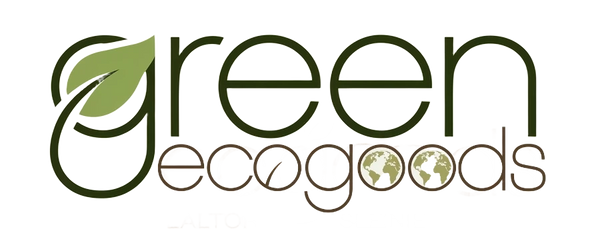
Should You Switch to Recycled Toilet Paper? Here’s the Real Deal
Green EcogoodsShare
Recycled toilet paper has earned a reputation — sometimes misunderstood, sometimes underestimated. Is it scratchy? Safe? Actually green? If you’ve been curious about making a more sustainable choice in the bathroom, but unsure what it really means, this guide cuts through the fluff (pun intended) and gives you the facts.
🌱 What Is Recycled Toilet Paper — Really?
Let’s get one thing straight: recycled toilet paper is not made from used toilet paper. It’s made from post-consumer waste like office paper, newspapers, and cardboard. In other words, you’re not wiping with someone else’s leftovers — you’re using clean, sanitized paper that’s been given a second life.
🔬 How It’s Made: From Paper Bin to Bathroom Roll
The production process begins with collecting and sorting post-consumer paper — this includes everything from junk mail to office printouts.  Once gathered, the paper goes through:
Once gathered, the paper goes through:
🧼 1. Cleaning & De-Inking
The material is washed to remove inks, glues, coatings, and any non-paper components like staples or plastic. This is done with a combination of mechanical agitation and chemical surfactants (non-toxic detergents). The de-inking step is critical for removing harmful residues and improving final softness and color.
💧 2. Pulping & Screening
Cleaned paper is pulped into a slurry using large amounts of water. It’s then screened to eliminate remaining contaminants and refined to improve fiber bonding.
☁️ 3. Sanitization & Whitening
Instead of using chlorine bleach (as is common in virgin pulp paper), many recycled TPs use oxygen-based compounds like hydrogen peroxide or ozone, which are safer and environmentally preferable. Some brands are labeled PCF (Processed Chlorine-Free).
🚫 4. BPA Concerns?
Recycled content may contain trace amounts of BPA (bisphenol A) from thermal receipts or glossy papers. However, studies show levels in recycled toilet paper are extremely low and not harmful to human health, especially in brands that pre-filter or exclude thermal papers from their sourcing.
🌍 The Environmental Problem with Regular Toilet Paper
Despite being a single-use item, traditional toilet paper has a massive environmental footprint.
🌳 Deforestation & Forest Degradation
Most conventional TP comes from virgin wood pulp, often sourced from boreal forests in Canada and Scandinavia — ecosystems that store twice as much carbon per hectare as tropical rainforests. According to the NRDC, major U.S. TP brands contribute to the loss of over 1 million acres of boreal forest each year.
💦 Water & Energy Use
The process of producing virgin pulp toilet paper consumes:
-
Up to 37 gallons (140 liters) of water per roll
-
Significant fossil fuel energy for drying, pressing, and bleaching
-
Emission of up to 1.5 kg of CO₂-equivalent per roll
In contrast, recycled TP reduces greenhouse gas emissions by 30–60%, and water usage by over 80%, depending on the source and plant efficiency.
✅ Pros and Cons of Recycled Toilet Paper
✔️ The Benefits
-
Significantly lower carbon footprint
-
Reduces landfill waste by repurposing materials
-
Saves water and trees
-
Often packaged plastic-free
-
Less chemically processed, better for sensitive skin and waterways
⚠️ The Trade-Offs
-
Texture: Often slightly rougher than premium virgin paper
-
Color: May have a gray hue or visible fibers
-
Price: Can cost 10–25% more per roll, especially with eco-certifications
That said, the functional difference is minimal, and the environmental benefit is substantial.
🧪 Is Recycled Toilet Paper Safe?
Yes. Recycled toilet paper is produced under strict hygiene protocols that meet health and safety regulations. The sanitization process eliminates bacteria and contaminants. Many top brands undergo independent testing and certifications (like FSC, SFI, PCF) to verify product quality and safety.
🚽 What About Septic Systems?
Most recycled TP breaks down as quickly as — or faster than — conventional toilet paper, making it safe for septic tanks and RVs. Always check for the "septic-safe" or "fast-dissolving" label if you have specific plumbing concerns.
🔍 Tried and Tested: Our Favorite Recycled Brands
We’ve tested several recycled toilet paper brands. Here are our top recommendations:
-
Who Gives A Crap (100% Recycled) – Strong, quirky, fully plastic-free delivery
-
Seventh Generation – Easy to find, well-priced, and reliable
-
Reel Paper – Hybrid of bamboo and recycled, soft and strong
-
Green2 – 100% recycled, no fragrances or dyes
-
Caboo – Bamboo-based (not recycled), but a sustainable option
Most users report that while the texture might be slightly different at first, it becomes unnoticeable after a few uses — and even preferred by those with sensitive skin.
🏷️ What to Look for When Buying
✅ Certifications That Matter
-
Post-consumer recycled content (ideally 100%)
-
FSC or SFI Certified (sustainable forestry practices)
-
PCF (Processed Chlorine-Free) or ECF (Elemental Chlorine-Free)
-
Plastic-free or compostable packaging
❌ Watch Out for Greenwashing
Avoid vague terms like “eco” or “natural” without third-party validation. Real sustainable brands are transparent about:
-
Fiber sourcing
-
Bleaching processes
-
Packaging materials
If a brand doesn’t clearly explain its production — skip it.
💬 Final Thoughts: Is It Worth It?
In a word: yes.
Switching to recycled toilet paper is a simple, low-effort way to lower your environmental impact without compromising on hygiene or functionality. It saves trees, reduces water and energy use, and encourages circular waste management — all for a product you use daily.
It saves trees, reduces water and energy use, and encourages circular waste management — all for a product you use daily.
Still unsure? Try a roll. The planet (and your conscience) will thank you.
